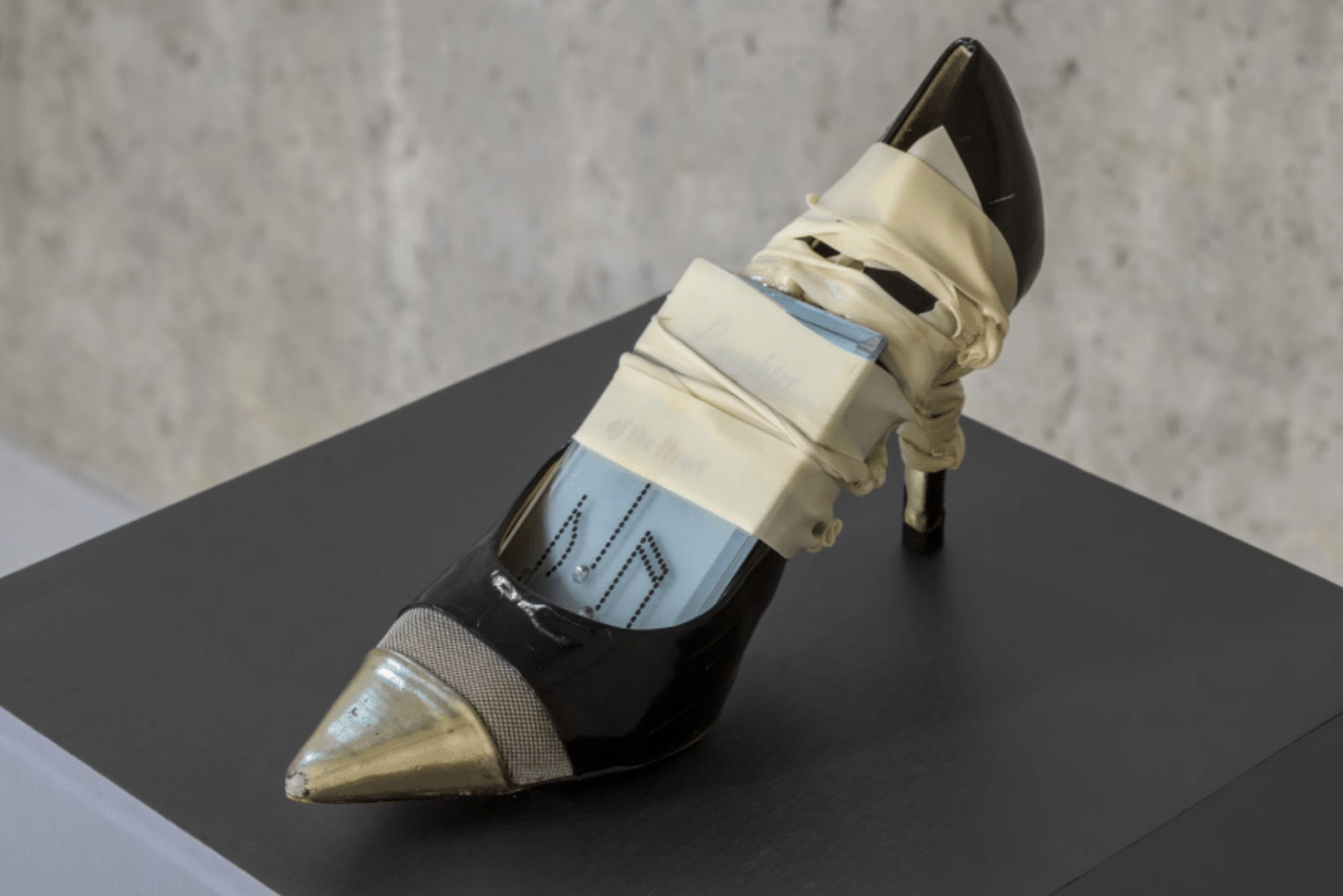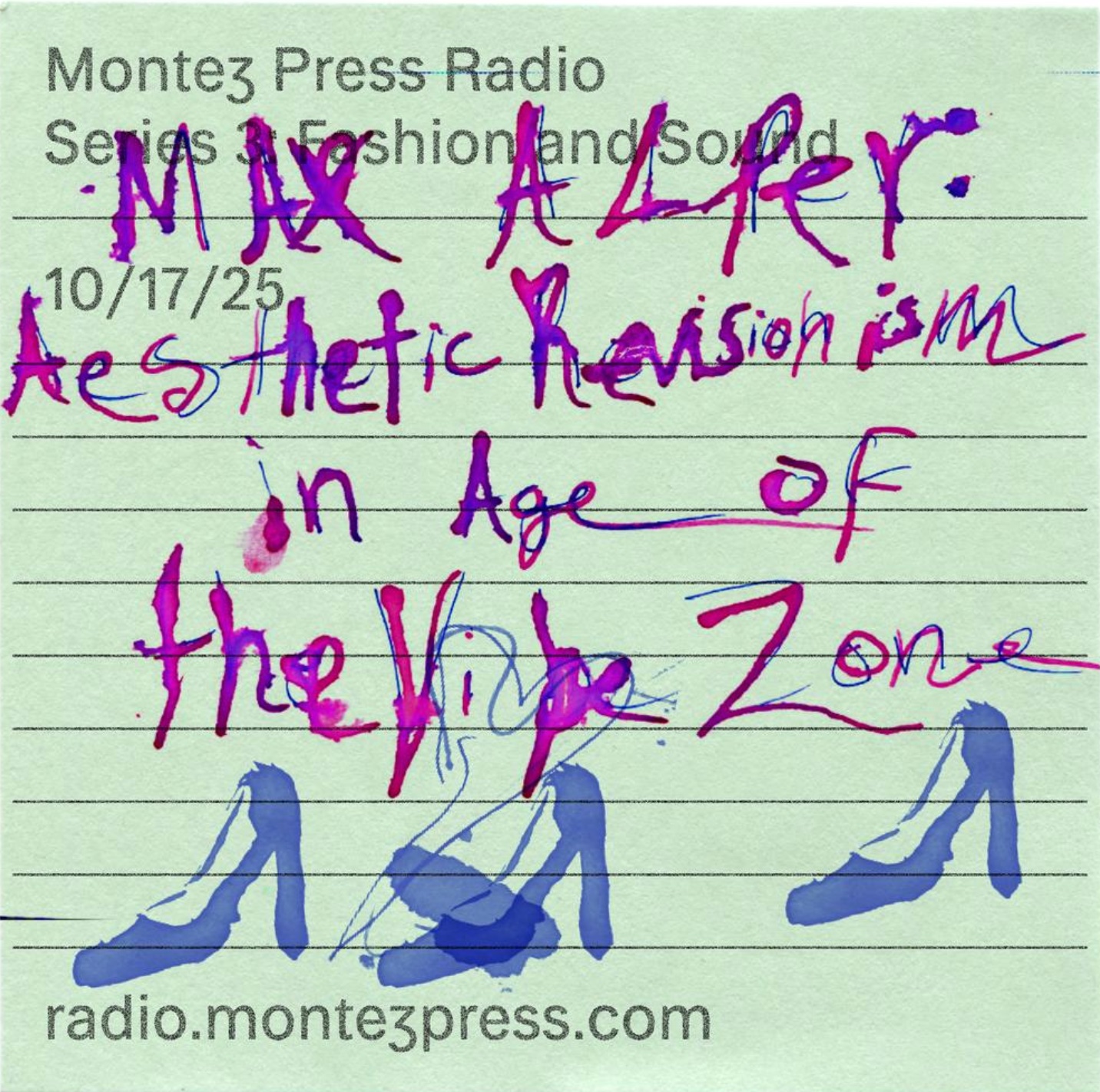Tuesday, November 18, 2025 by Montez Press Radio #fashion #music #interviews #art
Noisy Sculptures
A conversation between Jeppe Ugelvig and Lizzi Bougatsos, who crafts sculptures from objects in contact with the body and reveals how art can make noise through visuals alone.
Listen ➚here
Bonus Links:
>>> Listen to Bougatsos' latest track with Miho Hatori, CIRCLE OF LIFE ➚here.
>>> Find the full Fashion and Sound series ➚here.
Tuesday, November 18, 2025 by Montez Press Radio #music #fashion #readings
Shopping Soundtracks
Theodore Jahng soundtracks your shopping sprees in this audio essay, tracing the art form’s journey from Philadelphia’s Wanamaker organ to Spotify shuffle.
Listen ➚here
Bonus Links:
>>> Check out Jahngs monthly slot at The Lot Radio ➚here.
>>> Find the full Fashion and Sound series ➚here.
Tuesday, November 18, 2025 by Montez Press Radio #music #performance #fashion #art
A Performance in 70 Acts
Hanne Lippard’s ‘A Performance in 70 Acts’ traces the subtle, tentative interactions between garment and environments; where the material and social collide.
Listen ➚here
Bonus Links:
>>> Lippard performs The Contract ➚here.
>>> Find the full Fashion and Sound series ➚here.
Tuesday, November 18, 2025 by Montez Press Radio #music #fashion #readings
Welcome to the Vibe Zone
Max Alper (aka Peretsky) navigates the murky waters of musical aesthetic revisionism on social media, exposing how the algorithmic scroll has blurred cultural signifiers in fashion.
Listen ➚here
Bonus Links:
>>> Peretsky on the Perfect Playlist ➚here.
>>> Find the full Fashion and Sound series ➚here.
Monday, November 17, 2025 by DJ Uncertain #fashion
Series 3: Fashion and Sound
Our third series, a collaboration with Viscose Journal, on sound's relationship to fashion is now LIVE.
This series takes takes the form of print and audio.
You can find the journal to read and to touch at Visocose ➚here.
And you can listen to the audio elements of this series on Montez Press Radio ➚here.
Wednesday, September 3, 2025 by Montez Press Radio
ESS Creative Audio Archive / Malachi Ritscher Collection Recordings featuring Peter Brötzmann
Chicago-based nonprofit organization ➚ESS Creative Audio Archive brings us sounds from the collection of activist and recording engineer Malachi Ritscher, who died by self-immolation in an act of protest against the 2003 invasion of Iraq.
Bonus links:
Wednesday, September 3, 2025 by DJ Uncertain #music #radio plays #translation #poetry
Jazz Lambaux Foolsteps: Losing My Sole in the City









